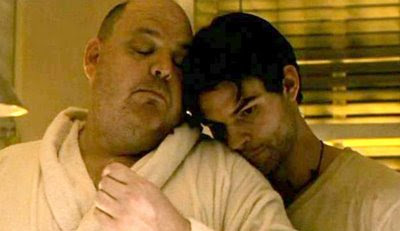Monsters in the Mirror: Origins of the Zombie
I was thinking on my favorite subject—monsters—when I realized that these creatures mostly rise out of folklore, find their way into literature then blossom onto both the big and small screen. This shouldn’t surprise us considering that monsters have been around or ages and only the way in which we tell their stories has changed with time. In this three part series, I will explore the origins of three classic monsters—vampires, werewolves and zombies—that have endured the past and continue to haunt our present.
Zombies have been around since the earliest forms of writing. In the Mesopotamian Epic of Gilgamesh the vengeful goddess Ishtar vows:
I will knock down the Gates of the Netherworld,
I will smash the door posts, and leave the doors flat down,
and will let the dead go up to eat the living!
The revolt of the dead against the living has been a popular image of horror and zombies can trace their folkloric lineage back to West African Voudon and Haitian voodoo. In both religions the zombie is a dead person brought back to life by a powerful sorcerer or bokor. The bokor controls the zombie that has no will of its own and the creature is forced to do the bidding of its master. According to the West African and Haiti traditions the zombie can only be defeated if the soul of the dead person is released by the bokor or if the zombie is fed salt.
A more scientific explanation for the mystical origins of the zombie lies in the potent poison of the pufferfish. Voodoo practitioners can use the puffer fish toxin to induce a death-like state, giving their victim the appearance of being raised from the death by the bokor. Zombies are so feared in places like Haiti that raising the dead is illegal. Family members of the deceased will dismember the corpse of their dearly departed to prevent the dead from being bought back to life.
Undead Picture Show
This archetype of the zombie who is controlled by a powerful sorcerer is preserved in later film adaptions like White Zombie (1932) starring Bela Lugosi and Val Lewton’s I Walked with A Zombie (1943). In White Zombie lovebirds Madeleine Short and Neil Parker meet in Haiti with plans to marry. The two are soon spotted by Murder Legendre (with a name like Murder….), an evil voodoo sorcerer played by Lugosi. Neil thinks he needs help convincing Madeleine to marry him so turns to Murder. Lugosi’s character transforms Madeleine into a zombie who is doomed to be “NOT ALIVE…NOR DEAD…Just a WHITE ZOMBIE Performing his every desire!”
The zombie as flesh eater in film appears nearly thirty years later in Romero’s stark black and white Night of the Living Dead (1968) Romero’s zombies have no mysterious master and no backstory. They simply appear in the graveyard, driving Barbara and other survivors into a nearby house. Single minded and voracious in their hunger for human flesh, the zombies of Romero’s Night are a force of nature. Consumed by consumption, they are a parody of us. This idea becomes clearer in Dawn of the Dead (1978) where survivors take refuge in a mall to avoid the hordes of zombies still hungry for more of the mall’s consumables.
“They’re Us”
The trend with zombies—in fact the trend with all the monsters in this series— is that as time passes and their stories are retold they become more human. In the novel Breathers: a Zombie’s Lament (2009) Andy Warner is “a recently deceased everyman” who—shunned by society—
attends Undead Anonymous meetings to smooth his transition into zombie life. Rather than taking his death lying down, Andy becomes part of a rogue zombie group that appreciates the delicate flavor of human flesh. The book ends with a class action lawsuit defending zombie rights.
The zombies-as-us trope stands strong in AMC’s Walking Dead series. A live-action comic book adaptation, it follows a group of survivors after the zombie apocalypse. The title is an accurate description not only of the corpse “walkers,” but of the main characters who struggle to eke out a living in a world filled with the dead. One character struggles to hold on to his wife’s humanity and can’t pull the trigger when he sees her as a zombie, can’t ignore the glimmer of humanity he sees beneath the surface.
The zombie is one of many monsters that help us figure out what makes us human. Whether it’s the rampaging infected of 28 Days Later or the endearing Bub from Day of the Dead, the zombie is a recognition and a warning that if we don't pay attention we’ll end up just as dead as they are.





Comments
Post a Comment